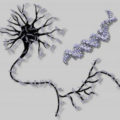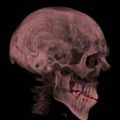
UC Santa Barbara researchers have demonstrated a significant breakthrough in the quantum control of photons. Reported in Nature, their findings could eventually have implications in banking, drug design, and other applications.
In their study, UCSB physics researchers Max Hofheinz, John Martinis, and Andrew Cleland document how they used a superconducting electronic circuit known as a Josephson phase qubit to prepare highly unusual quantum states using microwave-frequency photons.
In the experiments, the photons were stored in a microwave cavity; a “light trap” in which the light bounces back and forth as if between two mirrors. In earlier work, the researchers showed they could create and store photons, one at a time, with up to 15 photons stored at one time in the light trap. The new research shows that they can create states in which the light trap simultaneously has different numbers of photons stored in it. For example, it can simultaneously have zero, three, and six photons at the same time. Measuring the quantum state by counting how many photons are stored forces the trap to “decide” how many there are; but prior to counting, the light trap exists in a quantum superposition, with all three outcomes possible.
“This experiment can be thought of as a quantum digital-to-analog converter,” Martins added. As digital-to-analog converters are key components in classical communication devices, this experiment might enable more advanced communication protocols for the transmission of quantum information.
Related:
Entanglement of photon detected across four locations
Physicists Create Quantum-Entangled Images








Comments are closed.